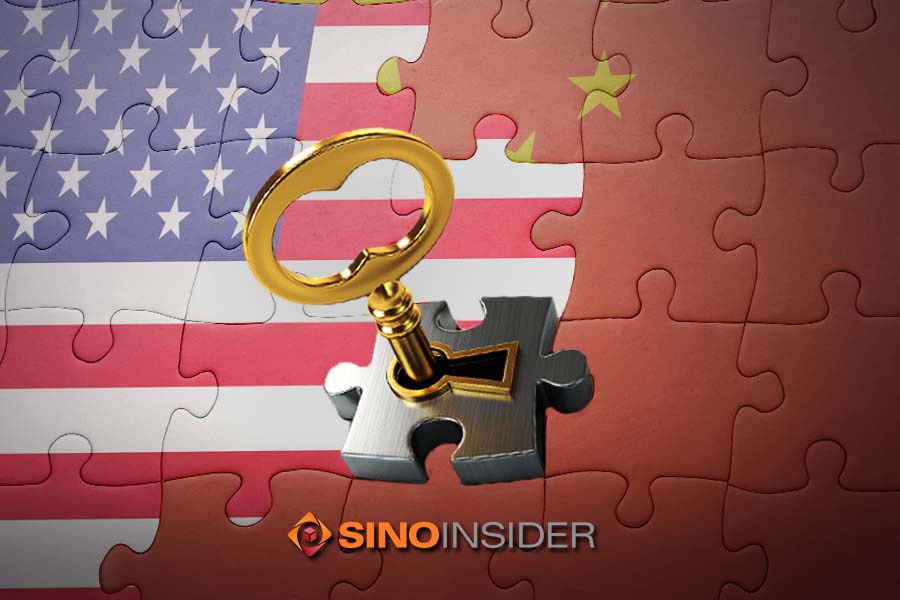◎ China is headed for tremendous change and political Black Swan events are on the horizon.
On May 5, President Donald Trump announced that he would be raising tariffs on all Chinese goods. In a tweet, Trump wrote that a 10 percent tariff on $200 billion of Chinese products would be increased to 25 percent, while a 25 percent tariff would be “shortly” applied to another $325 billion worth of Chinese exports.
Trump’s tweets sparked financial and economic turmoil:
- Nearly $2 trillion in global markets over a week, according to news reports;
- Volatility shot up, with the Cboe Volatility Index rising 50 percent in two days, according to Bloomberg;
- Trading volume in China’s stock markets shrank to under 500 billion yuan on May 8 and May 9. By the end of the week, the Shanghai index fell by 4.52 percent while the Shenzhen index fell by 4.15 percent;
- The Hong Kong index fell by 5.09 percent in the week of May 6, the largest weekly decline since February;
- Net outflows from the Shenzhen-Hong Kong Stock Connect was 15.919 billion yuan in the week of May 6;
- The offshore renminbi exchange rate fell 1.39 percent between May 4 (6.7505) to May 11 (6.8456), a new low since Jan. 8;
The Sino-U.S. trade conflict has already inflicted collateral damage to companies from around the world. Manufacturers and suppliers in China have begun laying off workers and moving out from the mainland and to neighboring Taiwan or Southeast Asia. In early May, Foxconn and Brooks Running announced that they were moving production out of China, while Oracle announced the layoff of hundreds of workers.
SinoInsider anticipated Trump’s tariff move in January. We wrote in our 2019 China outlook: “The U.S. may raise tariff rates on $200 billion worth of Chinese goods from 10 percent to 25 percent before June. President Donald Trump may order 25 percent tariffs on an additional $267 billion worth of Chinese goods in the second half of 2019.”
Businesses, investors, and suppliers who have been following our analysis and predictions would have months to plan ahead, reduce volatility, and minimize losses. They would also be able to uncover new opportunities.
How we predicted the raised tariffs
Nearly all issues in China today, including economics and geopolitics, are shaped by the Chinese Communist Party. Thus, a deep understanding of the CCP is required to make accurate analysis and predictions about China.
Our January prediction about raised tariffs was based on our understanding of CCP characteristics and the factional struggle in elite politics, as well as anticipation of how the Trump administration might react to Beijing’s moves.
CCP characteristics dictate that the Chinese regime will seek to drag out trade talks for as long as possible to buy time to do whatever is necessary to ensure regime survival. Once regime survival is achieved, the Party will move to dominate per the survival-dominance dynamic. Based on this understanding, we knew that the CCP would implement delaying tactics in trade negotiations with the United States.
Meanwhile, the CCP factional struggle compels the Xi Jinping leadership to reform the regime. To that end, Beijing has been paving the way in propaganda and policy to make structural reforms. Reform, however, is a high-risk endeavor for any Party leader to undertake. Delaying tactics aside, Beijing’s recent “backslide” in the trade talks is at least partially influenced by stiff resistance from Xi’s factional rivals to his reform intention.
Finally, we anticipated that the Trump administration would not let the trade talks drag out indefinitely due to the political and economic situation in America. To avoid being undermined on the China issue before the 2020 U.S. presidential election, Trump would likely want a trade deal sooner rather than later. Moreover, we anticipated that the administration would eventually discover and react strongly to the CCP’s delaying tactics.
After accounting for the above factors, we predicted that America may raise tariff rates on $200 billion worth of Chinese goods from 10 percent to 25 percent before June.
What’s next
We believe that China is headed for tremendous change and political Black Swan events are on the horizon. Companies and investors face significant political risks in China.
Get smart
Our experts are able to both accurately explain and forecast developments in China due to our thorough understanding of the CCP and its operations.
Our expertise has allowed us to:
- Accurately predict many political, economic, social, and geopolitical events in China in 2018;
- Predict China trends in 2019 with a high degree of accuracy (see here and here);
- Most recently, we noted that China’s economy has not “bottomed out” despite “strong” Q1 figures, and that China would fare poorly on the economic front in April and in Q2 (see here and here). China’s “unexpectedly” poor April economic data has demonstrated that unlike mainstream analysts and commentators, we actually do know China.
Businesses, investors, and governors who wish to sidestep trade war risks and discover opportunities in the second half of the year are welcome to read our special report, “2019: A Waterloo Year for China and the United States.”













